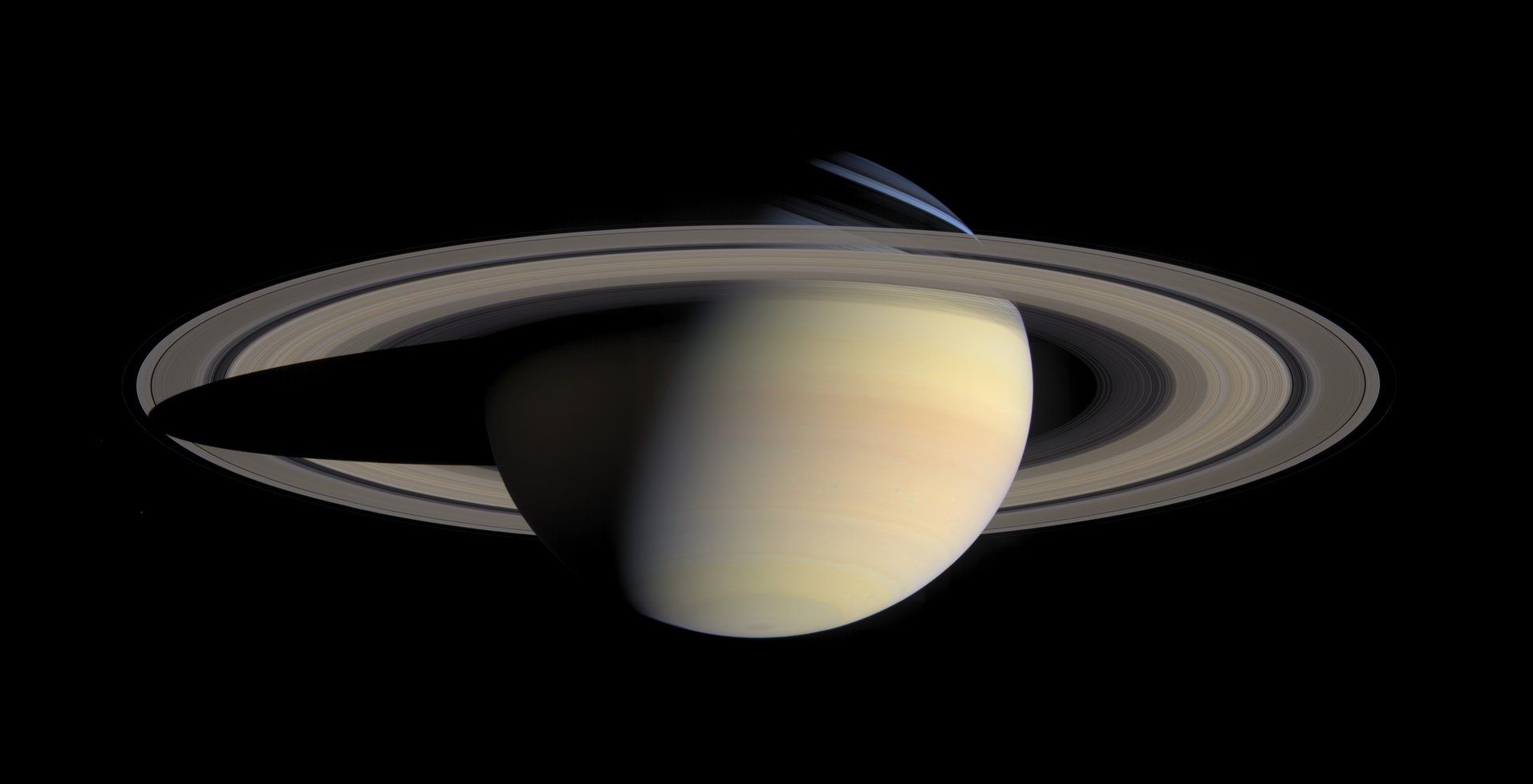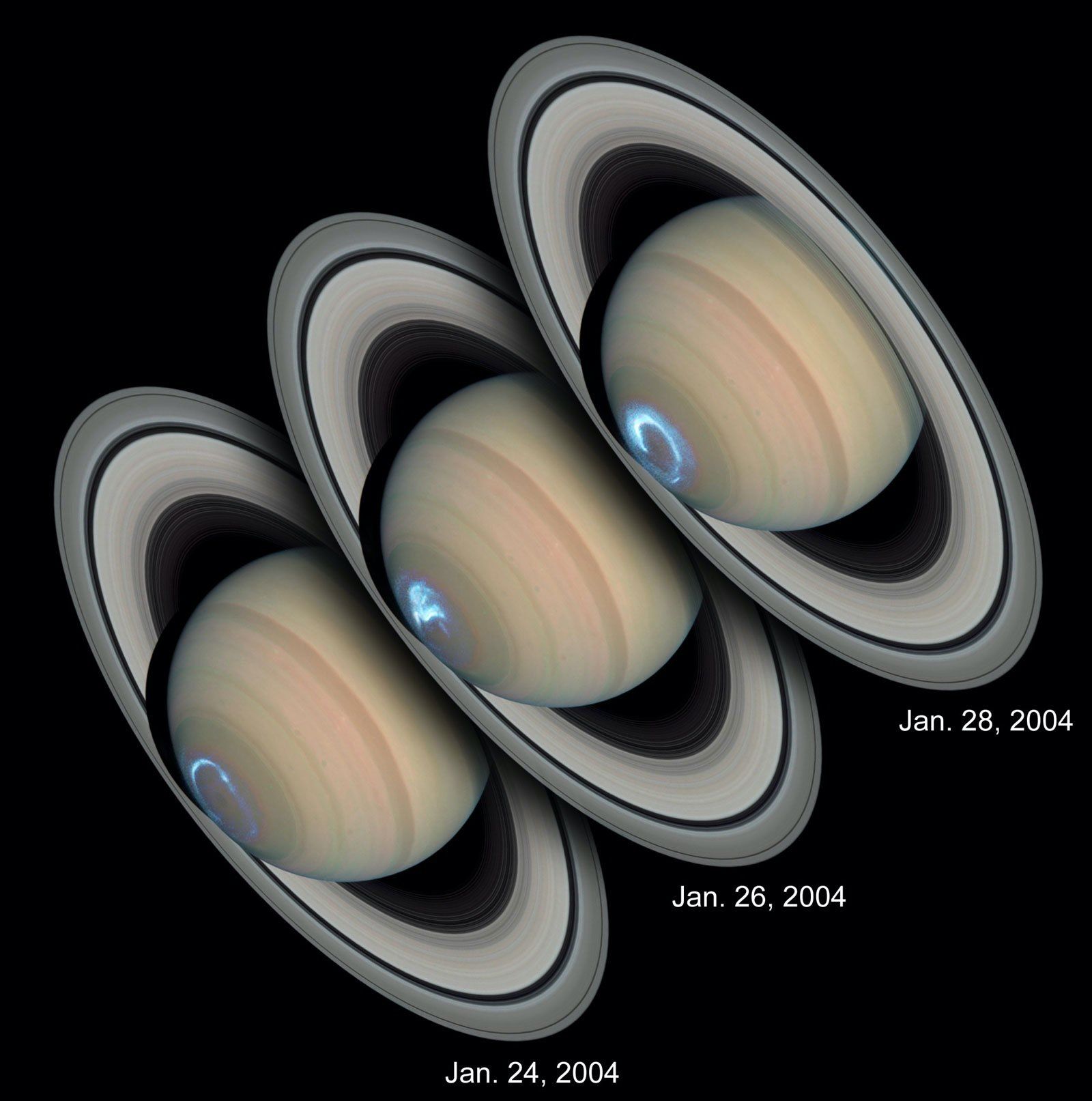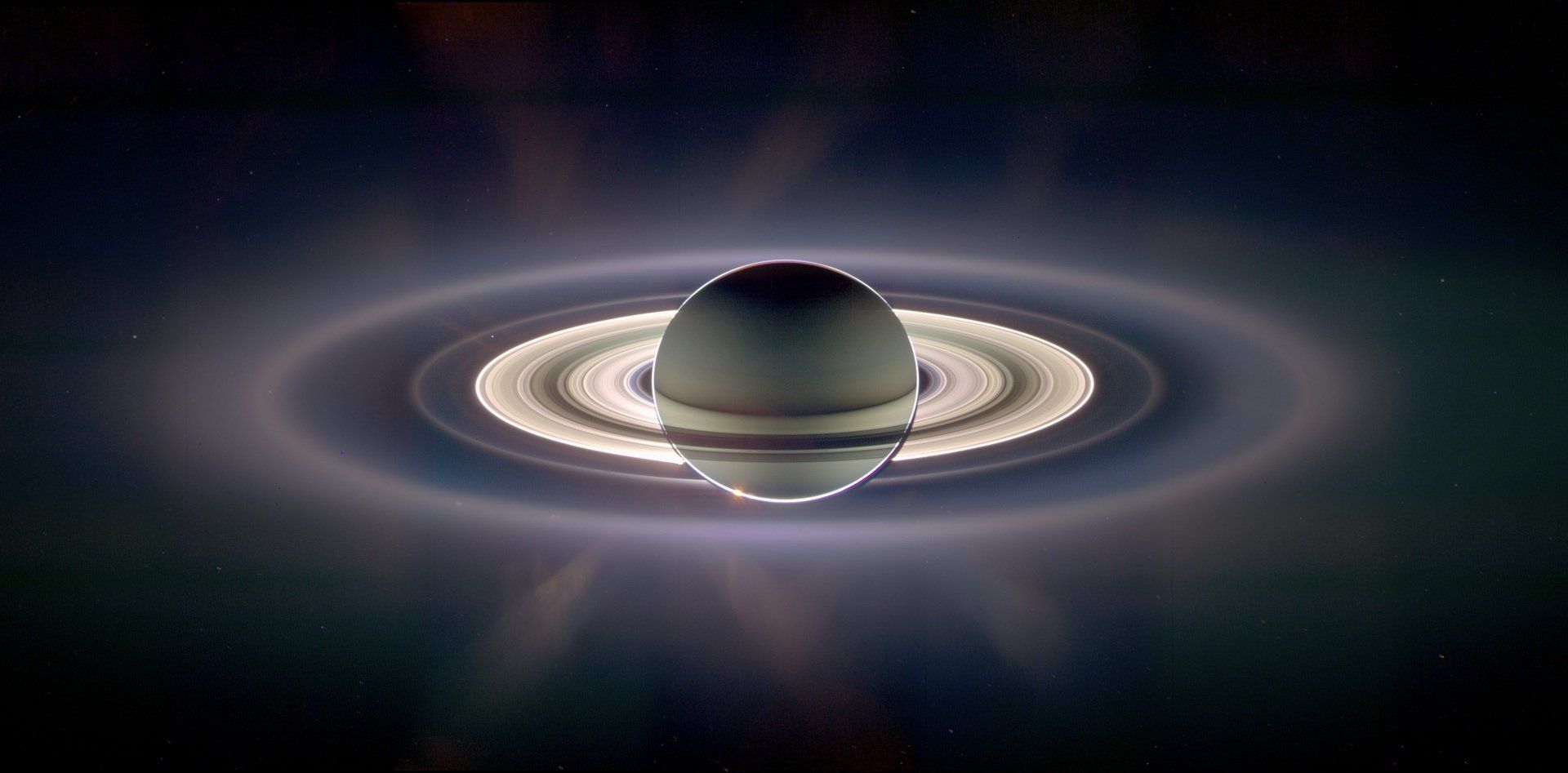This web page is created within BALTICS project funded from the European Union’s Horizon2020 Research and Innovation Programme under grant agreement No.692257.
Saturn
Saturn is the second-largest planet in the Solar System. It is a giant planet composed mostly of hydrogen and helium. Saturn has a complex ring system that is easily visible from Earth, even in small telescopes.
Saturn is the farthest planet that can be seen with the unaided eye in the Earth’s sky. The first written records documenting Saturn are attributed to the Assyrians. Saturn is named after the ancient Roman god of agriculture. Saturn is also immortalised in the name of one of the days of the week “Saturday”.
Saturn’s orbit is on average 1.4 billion kilometres, or 9 astronomical units, away from the Sun. One year on this planet lasts 29.5 Earth years. One day is about 10.7 Earth hours long. Saturn is flattened because of its rapid rotation on its axis. Its equatorial radius is 10% larger than the polar radius.
As Saturn’s rotation axis is tilted by 26.73 degrees relative to the ecliptic plane, the planet experiences seasons.
Nowadays, Saturn, like Jupiter, is not located in its original location, where it was formed around 4.5 billion years ago.
The giant planet most likely formed closer to the Sun and then moved.
The ringed planet is composed mostly of hydrogen and helium. A solid core, enveloped by a layer of metallic hydrogen inside a layer of liquid hydrogen, could be at Saturn’s centre. The outer layers are made up of gaseous hydrogen and helium, with small mixtures of water, methane, ammonia and other volatile compounds.
Saturn also has a magnetic field. It is about 580 times stronger than Earth’s. It contains the entire ring system and most of the moons. Charged particles accelerated by the magnetic field travel along magnetic field lines to Saturn’s polar regions, where they interact with the compounds already there, causing strong auroras.
Saturn’s outer atmosphere layers form visible bands, although weaker than Jupiter’s. The chemical composition of the clouds depends on their altitude, temperature and pressure. Ammonia clouds are the highest, clouds containing high concentrations of water are located lower. The different chemical composition results in a variety of colours. Occasional storm systems can be observed in Saturn’s atmosphere. One of the best known, which recurs about every 30 Earth years, is the Great White Spot. It occurs around Saturn’s Northern Hemisphere’s summer solstice. If the periodicity is maintained, the next spot is expected in 2020.
Strong winds have been recorded in Saturn’s atmosphere. Winds can reach speeds of 500 m/s. Slower winds (~90 m/s) occur in the North Pole region, where a unique atmospheric feature, the hexagonal vortex, has been observed. The hexagon is over 30,000 km in diameter. A huge rotating storm is at its centre. The South Pole vortex, which is about the same size as planet Earth, is not hexagonal. It is the warmest place on Saturn, if -122oC can be considered warm. The average temperature on Saturn is -185oC.
Despite its enormous size — Saturn is about 9.5 times bigger than the Earth — its density is relatively low (0.687 g/cm3). Saturn’s density is less than that of water, which means that it would float on the surface of the water.
Saturn has 62 known moons, 53 of which have been named. The largest moon is Titan. Saturn’s rings contain dozens, possibly hundreds, of moonlets with diameters between 40 and 500 metres. They are not considered to be true moons but part of the rings.
The rings are made up of ice and hard rock particles of different sizes, which come from comets, asteroids, particles knocked out of moons and even moons that have been torn apart. Particles range in size from tiny, dust-sized particles to objects tens or even hundreds of metres in size. The high concentration of water ice (99.9%) gives the rings their light colour and ensures high reflectivity.
Saturn’s rings are about 280,000 km wide, with an average height of a few tens of metres. The rings are often referred to as the cosmic razor blade because they are so thin. As Saturn orbits the Sun, every 15 years, the rings are tilted towards the Earth. At that moment, the ring system is almost unobservable from Earth.
Saturn’s rings are named alphabetically in the order they were discovered. The main rings, working out from the planet, are C, B and A rings. The B and A rings are separated by the Cassini Division that is about 4,700 kilometres wide. The innermost is the extremely faint D ring. The narrow F ring is just outside the A ring, and further out are two fainter rings, G and E. It should be noted that the particles in each ring orbit Saturn at different speeds. Besides Cassini, there are other gaps in the rings, such as Encke, where small moons orbit.
Interestingly, in 1610, Galileo Galilei was “fooled” by the rings. As he saw smaller objects on either side of the planet in his telescope, the scientist thought it was a three-object system. In 1659, Christiaan Huygens, using an already more powerful telescope, was able to find out that the planet could be surrounded by a thin disk. Nowadays, the Cassini project, which will end in September 2017, has made the biggest scientific contribution to the study of Saturn.
Thanks to its unique appearance, Saturn has been used extensively in works of science fiction: literature, cinema and video games.























